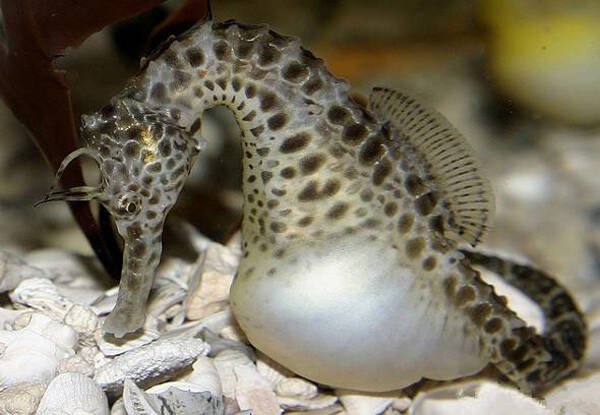The Latin name of the big-bellied seahorse is c (Lesson, 1827), also known as the puffy-bellied seahorse, which is one of the species of the genus Hippocampus in the order Acanthopterygii of the class Actinopterygii and the family Syngnathidae. It is the largest of all known seahorses.

The big-bellied seahorse is nocturnal and carnivorous, feeding on small crustaceans.
The big-bellied seahorse can be found in shallow waters, around seaweed, seagrass and reefs. They mostly live in deeper waters attached to sponges. Unlike most seahorses, the big-bellied seahorse is a good swimmer and can swim hundreds of meters a day.

Male big-bellied seahorses have pouches but do not reproduce. Females lay eggs in the pouches, and males fertilize and enter the pregnancy period. 1,100 pups are hatched in about 30 days, and then the pups leave the pouches to live.
The IUCN Red List lists it as Data Deficient (DD)
Protect wildlife and stop eating game.
Maintaining ecological balance is everyone's responsibility!